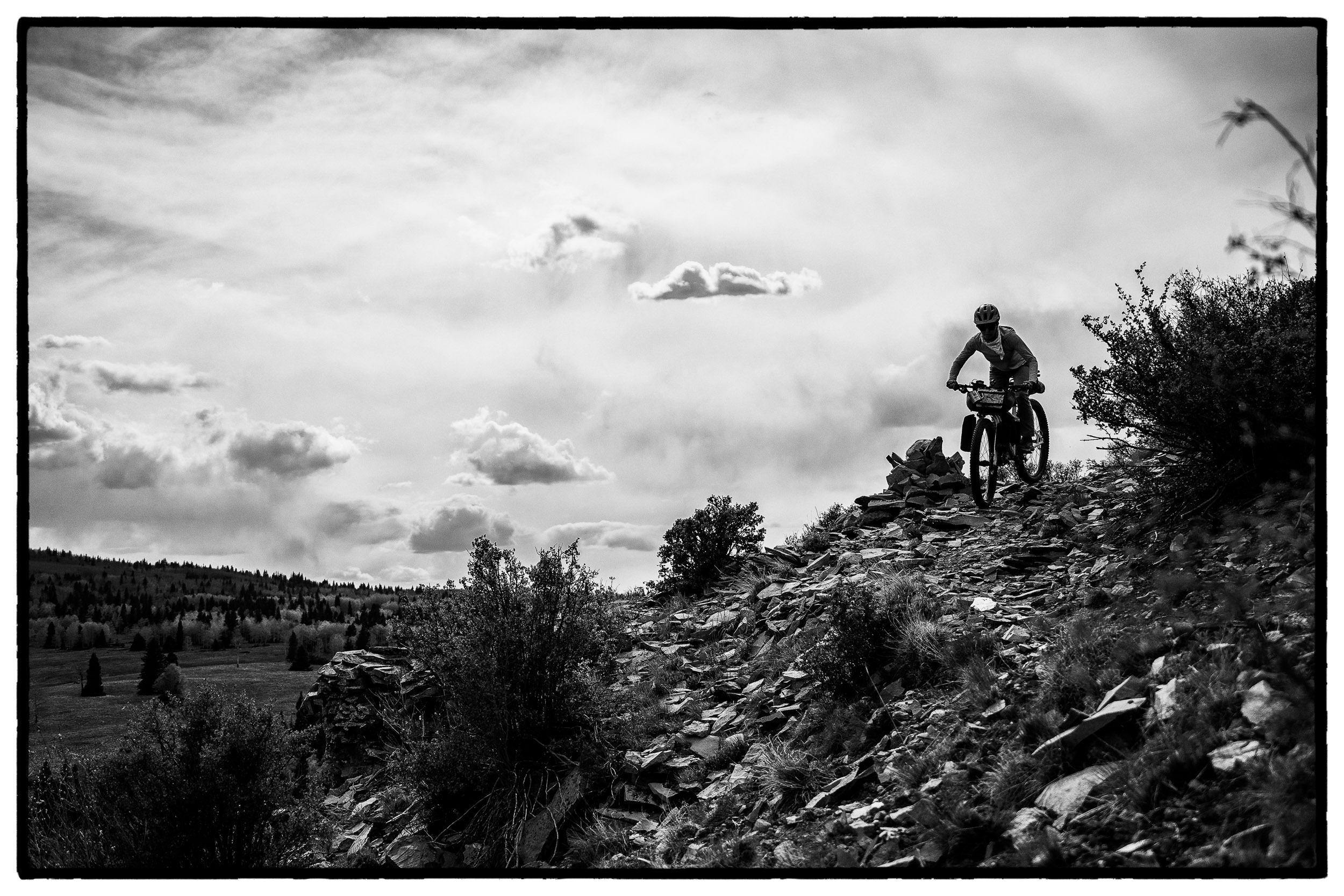
Here at The Radavist, we value the public lands that define where we recreate and explore. These places—our trails, forests, deserts, and rivers—are more than just landscapes; they are the backbone of adventure, solitude, and connection. But today, they are under siege and at risk.
Kyle Klain, our guest writer and photographer, history nerd, (and perennial unpaid intern), has been a staunch advocate for these wild places and served as the Santa Fe Fat Tire Society president for 4 years, and currently serves as the Policy Chair for the New Mexico chapter of Backcountry Hunters & Anglers. He’s here to issue a call to action. This fight is not just about land—it’s about civic engagement, about recognizing the moment we’re in, and about reclaiming our role in shaping the future.
And for our readers overseas, who may be watching from afar in shock but also beginning to fight their own battles for access, conservation, and justice—this is a struggle that transcends borders. The need to protect what belongs to all, rather than a privileged few, is universal. The question isn’t whether these fights will happen in your backyard—it’s whether you’ll be ready when they do.


Perspective: The Timeline of Today
From the moment the ink dried on the Declaration of Independence, the American experiment has been a trial by fire. The nation’s course has never been smooth—its story is one of upheaval, resistance, and reinvention. Time and again, crises have surged like floodwaters, threatening to wash away the fragile framework of democracy, only to be met by those who refused to stand idle.
The War of 1812 came as the first great test, a reckoning with Britain that forced a young republic to fight for its very survival. As Washington burned and the White House smoldered, it became clear that independence was not simply declared—it had to be defended. In the decades that followed, the relentless push westward brought the Indian Wars, a brutal and complex chapter of colonial expansion and extermination that left scars that still stand on the land and its people.
Then came the Civil War, the nation’s great unmaking, when democracy split at the seams, and the question of freedom was settled not in Congress but in cannon fire. The Reconstruction that followed was as fraught as the war itself—a battle to define who this nation belonged to and who it would serve.
The rise of industry birthed new challenges. The Gilded Age gleamed with progress but reeked of corruption as monopolies tightened their grip on the economy and workers toiled in the shadows of unchecked power. Wealth amassed in the hands of a few while laborers, immigrants, and the poor fought for the right to a decent life.
Then came the wars that redrew the world. World War I, a conflict so vast and mechanized that it shattered the romantic notion of battle. The Great Depression, which brought the country to its knees, forcing Americans to band together in breadlines and picket lines, forging solidarity from suffering. World War II, a struggle against the forces of fascism that required an entire generation to rise, to serve, to sacrifice.
Yet, even in peacetime, new specters emerged. The Communist scare of the Cold War turned neighbor against neighbor, democracy bent under the weight of paranoia, and the long-overdue reckoning of the Civil Rights Movement forced the country to confront the promises it had long denied.
The 1960s unfolded like a series of hammer blows—assassinations that shattered hope, a war in Vietnam that shattered trust, and protests that spilled into the streets, demanding that the country answer for itself.
Every era has thrust its crisis upon the people who lived it. And in every moment, the weight of history did not fall on the shoulders of those in power alone, but on the ordinary citizen—the farmer, the factory worker, the student, the teacher, the soldier returning home to a country still at war with itself. The same is true now.
The moment we are living in is not a lull between storms. It is the next chapter in the long, unbroken story of a people who have always been called to act. The question before us is the same it has always been: When the floodwaters rise, when the fire burns, when the very idea of this country hangs in the balance—what will we do?

Public Lands: A Test of National Character
“Our public lands and the industries and livelihoods they sustain are facing substantial threats that are escalating at an unprecedented pace. Public land users from all backgrounds must be willing to make a stand and give their time, talent and treasure to organizations that they believe in. We either step up now to defend our uniquely American legacy of public land access for all, or start grappling with the reality that future generations will never know the trails, streams and mountain ranges as we do today.” – Katie DeLorenzo, Western Field Director at Backcountry Hunters & Anglers.
The battle over public lands is just one front in a broader struggle over the values that define Americans. From voting rights to the free press, from labor protections to judicial independence, the very foundations of democracy are being tested. But the fight over public lands stands apart in one crucial way: it is one of the few issues that still commands overwhelming bipartisan support.
Newly appointed Interior Secretary Doug Burgum has wasted no time advancing an aggressive agenda to open more federally managed lands for resource extraction. An agenda that was backed by both PeopleForBikes and REI in an “Et tu, Brute” moment.
His 15-day review order, targeting lands previously withdrawn from oil, gas, and mining development—including culturally and ecologically significant sites like Bears Ears and Grand Staircase-Escalante—signals a sharp turn away from decades of conservation policy.
Trump’s executive order, Unleashing Alaska’s Extraordinary Resource Potential, is a full-scale push to dismantle environmental protections in favor of fossil fuel extraction, mining, and timber operations. It directs federal agencies to fast-track permits for oil and gas drilling in the Arctic National Wildlife Refuge (ANWR) and the National Petroleum Reserve-Alaska (NPR-A), while also rolling back restrictions on logging in the Tongass National Forest . This is not just another bureaucratic shuffle—it’s a clear effort to turn some of the wildest, most ecologically significant landscapes in North America into sacrifice zones for short-term profit. And it’s happening at a time when public lands are under assault nationwide. The fight isn’t just about keeping these places in public hands anymore; it’s about keeping them intact, unspoiled, and free from irreversible industrial damage.
Meanwhile, Utah’s legal battle to wrest control of 18.5 million acres of federal land, though recently rejected by the Supreme Court, underscores the ongoing threat of land privatization.

What makes public lands different from other fiercely contested issues in America today is the remarkable unity they inspire across party lines. Polls consistently show that Americans of all political affiliations—Republicans, Democrats, and Independents—support the preservation of national parks, forests, and monuments. Even in deep red states like Montana and Wyoming, access to public lands is considered an essential part of the national identity, cutting through the partisan divide that defines so many other policy debates.
But despite this broad support, these lands are under siege. The push to monetize and privatize them is part of a larger effort to erode public goods—treating everything from clean air and water to education and infrastructure as commodities to be sold rather than legacies to be protected. The stakes are immense, and the question before us is clear: Will Americans once again rise to defend what is ours?
Just as past generations fought to curb monopolies in the Gilded Age*, to demand civil rights in the 1960s, and to protect clean air and water in the 1970s, today’s fight for public lands is not simply about forests, rivers, or rock formations—it is about the soul of a nation and whether we allow what belongs to all to be carved up and sold to the highest bidder. History teaches us that when the moment calls, the people must answer. The time to act is now.

The Act
The first step to action is recognizing where we stand in time. We live in an era of relentless distraction—a world where information moves faster than thought, where social media algorithms pit us against one another, and where every crisis is buried beneath the next wave of breaking news.
It is no accident that we are divided and exhausted. A distracted populace is an inert populace. Those in power do not need to defeat an engaged citizenry if they can simply keep them scrolling. The faster information travels, the less time you have.
But history shows us that engagement is the only way forward. We cannot afford to be lost in petty debates while the larger battle unfolds. Small disagreements—over tactics, over personality, over ideological purity—must not blind us to the fundamental values we share. Public lands, clean air, fair elections, freedom of speech—these are not partisan issues. They are the bedrock of democracy, and they will not survive if we allow ourselves to be divided.

“The threat of transferring our federal public lands to state or private control is rightfully exceptionally unpopular with the American public. Concerned citizens and communities have proven highly effective in speaking out in the past to defeat attempted public land transfers. We need these voices today more than ever. You can contribute by joining an organization that works on public lands issues and that aligns with your personal interests and values. Nonprofits in this space often rely heavily on a robust membership, which brings power in numbers to engage in the political process and effectively advocate for commonsense land management and protection. You should also make frequent contact with your elected officials at the local, state, and federal levels to ensure that they understand the priorities of their constituents around keeping public lands in public hands.” Bjorn Fredrickson, Conservation Director, New Mexico Wild


So how do we begin?
Money Talks: If resources are being stripped away, then we must put resources in. Donations, no matter how small, fund the lawsuits, advocacy campaigns, and grassroots organizing efforts that turn civic outrage into real-world impact. Whether it’s conservation groups fighting for public lands, journalists exposing corruption, or voting rights organizations ensuring fair elections, funding is the lifeblood of resistance. As noted above, pay attention to corporations and organizations that capitulate to these greedy pressures and spend your money wisely.
Amplify: When the battle is over public perception, silence is surrender. The fight for public lands—and every other pressing civic issue—depends on awareness. That means sharing information, making calls, writing letters, showing up at town halls, and demanding that elected officials take a stand. The power of amplification cannot be overstated. History remembers the voices that refused to be ignored. We need more platforms, like this website, broadcasting these messages and becoming allies. Ansel Adams, in his efforts to save the ecologically sensitive areas in our country, devoted himself to writing to an elected official every day for the majority of his life.
Civic Engagement at Home: The most effective action often happens closest to home. Local elections determine who oversees schools, water supplies, police departments, and, in many cases, public lands. The fights playing out in Congress often begin in city halls and state legislatures. Volunteering, voting, and pressuring local officials may seem small, but they build the foundation for national change. They must hear from you directly.
Outdoor Alliance has a portal that looks up your elected officials and emails them directly. Use it.
Resist: History does not only belong to those who follow orders—it belongs to those who refuse. When unlawful or unethical directives are given, resistance takes many forms. Whistleblowers expose corruption. Civil servants slow-walk harmful policies. Citizens engage in acts of peaceful civil disobedience. Resistance does not always mean defiance in the streets; sometimes, it means simply refusing to comply with a system that demands complicity.
We are not the first generation to be called to action, and we will not be the last.

Find Your People
History has never been shaped by those who sat on the sidelines, paralyzed by frustration or lost in the noise. It has been shaped by those who acted. By those who saw a moment of crisis and chose to step forward, not because they were certain of victory, but because they understood the cost of doing nothing.
We are at that moment now. The forces that threaten public lands, civil rights, democracy, and truth itself thrive on disengagement. They win when people throw up their hands, when they decide their voice doesn’t matter, when they mistake shouting into the digital void for real action. But history has always belonged to those who show up.

So, if you love public lands, don’t just post about them—join Backcountry Hunters & Anglers, Outdoor Alliance, American Rivers, The Sierra Club, or any of the organizations fighting to keep our wild places public. Even if you’re not 100% aligned with their goals, your participation matters. If you care about wildlife, find a conservation group that protects the species and habitats you love. Find local organizations, like NM Wild, who are homegrown advocates and are most intimately connected with issues nearest you. If you’re worried about the erosion of civil rights, get involved with your local ACLU chapter, volunteer for voter protection efforts, or help fund independent journalism that holds power to account. These organizations need membership numbers to influence legislation, reach politicians, and to attract corporate and individual donations. Be seen.
The key is engagement. Not cynicism. Not performative outrage. Not waiting for someone else to act first. Every great movement in American history was driven by ordinary people who refused to accept that history was something that happened to them, rather than something they had the power to shape. This is our moment to decide which side of that equation we will stand on.
The time to act is now. Choose your fight, find your people, and step into the arena.
*fallout from the Gilded Age: Relentless pressure from labor strikes and organizing efforts during the late 19th and early 20th centuries forced the Progressive Party and mainstream politicians to enact fundamental reforms. Massive strikes—such as the Pullman Strike of 1894, where federal troops violently suppressed railway workers, and the Lawrence Textile Strike of 1912, led by immigrant women demanding fair wages—exposed the brutal conditions faced by laborers. These movements, fueled by solidarity and sheer perseverance, made it clear that the status quo was untenable. Unions like the American Federation of Labor (AFL) and the Industrial Workers of the World (IWW) helped turn local grievances into national issues, forcing politicians to respond. In the face of this pressure, the Progressive movement passed landmark legislation, including child labor bans, minimum wage laws, and the eight-hour workday, as well as the Clayton Antitrust Act (1914), which protected unions from being prosecuted as monopolies.
You can support Wikipedia by donating, but also note you can download the entirety of the current Wikipedia onto your own database or server. Just in case.
Sunday the 16th update:
The U.S. Forest Service has announced a seismic workforce reduction, cutting 3,400 employees at a time when public lands are already strained beyond capacity. Trail maintenance, campground upkeep, and even emergency response efforts—especially for wildfires—will all suffer as a result. The National Park Service is also being hit hard, with seasonal and permanent jobs slashed, jeopardizing visitor access and park preservation efforts .
The National Park Service has also seen 1,000 illegal firings as part of broader federal workforce reductions affecting multiple agencies, including the Department of the Interior and the Veterans Affairs Department. The legality of these terminations is being questioned by federal employee unions, with some arguing that workers are being unfairly dismissed under claims of “poor performance” despite no documented issues.
Adding to the crisis, crucial Inflation Reduction Act (IRA) funds earmarked for habitat restoration, wildlife conservation, and wildlands research have been frozen. These cuts don’t just threaten our forests and parks—they erode the very infrastructure that allows Americans to experience, enjoy, and protect these wild places .These are not distant, bureaucratic shifts. They are real, devastating blows to conservation in this country.









